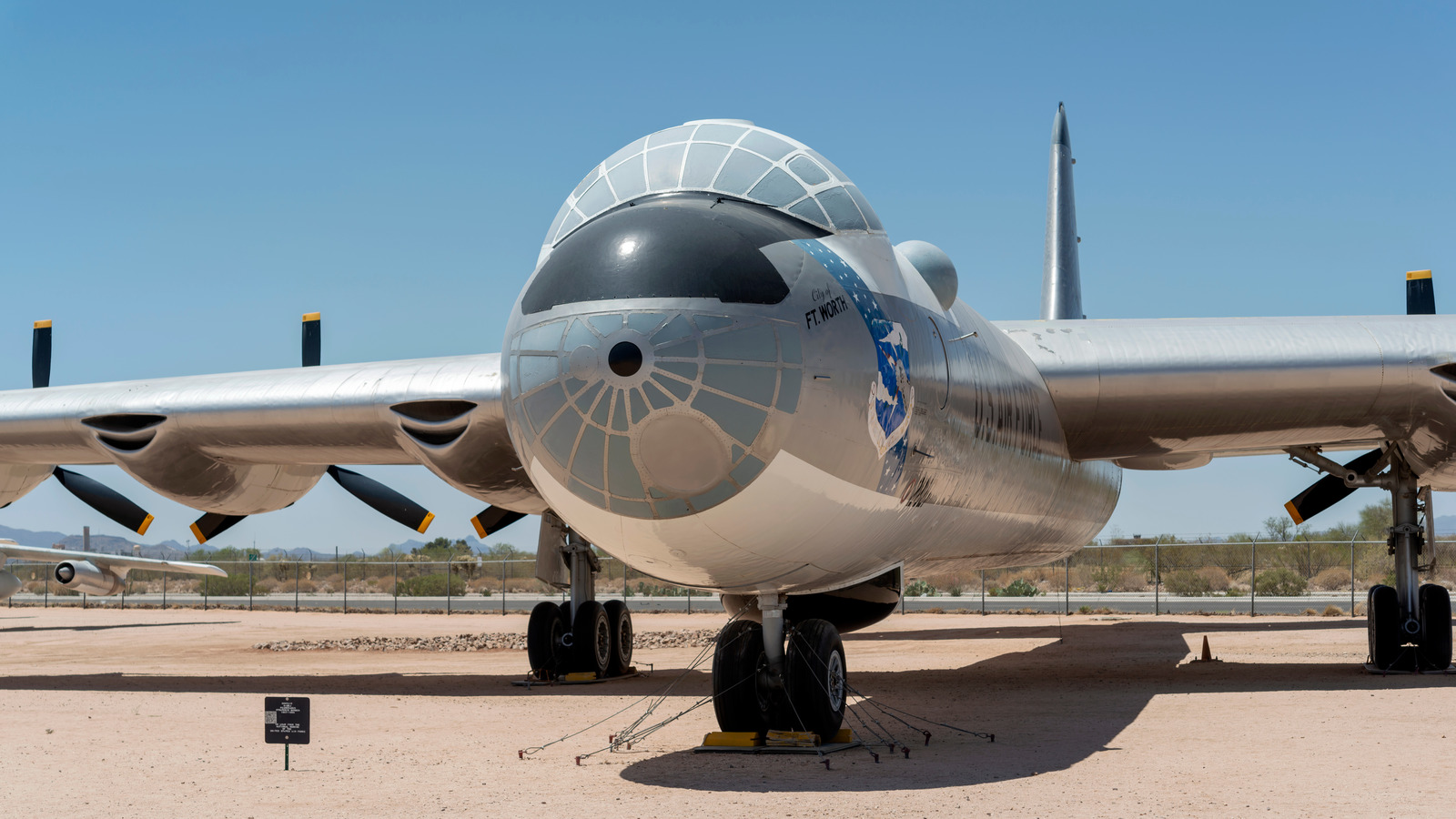
One of the greatest and most daring projects in the history of aviation, the Convair B-36 Peacemaker is the product of the fears, brilliance, and strategic needs during the early days of the Cold War. The history of its development begins at the end of the Second World War, when the US military planners were afraid that they might not be allowed to use the European bases anymore. In order to be ready for hitting the enemy from America, the Air Force came up with a plane that would have the following seemingly impossible characteristics: a 10000-mile range, a functional altitude of 40000 ft, and the capability of transporting huge loads of bombs across the continents.

In December 1941, just before the USA entered WWII, Consolidated Vultee, later known as Convair, was awarded the contract, taking the edge over Boeing. The construction of aircraft like this one pushed the boundaries of contemporary technology. Such an aircraft was designed almost from scratch, with the designers continuously changing the details, adapting the technology, and the like, accordingly. The most attractive part of it was the 230 feet width of the aircraft, its wingspan—the largest of any combat aircraft before or after. The wings were so enormous that special pathways were built inside them, thus enabling the crew to do in-flight engine maintenance, which is still a very interesting fact for people who love planes even today.

It was no less than a showcase of the state-of-the-art technology at the time to design the power train for such a behemoth. The initial models were powered by six Pratt & Whitney R-4360 Wasp Major radial engines set up in a rear-facing “pusher” layout. The next versions got an extra four General Electric J47 jet engines on the wing, which contributed to the aircraft’s nickname, “six turning, four burning.”

However, the B-36 was far from being a fast jet, as it cruised at about 200 mph and could reach 400 mph at high altitudes. Still, its strength was great enough for an aircraft of its size. The last variant of the B-36J was a combination that could almost reach 40000 feet, with a weight at takeoff of over 410,000 pounds – such a feat that even today, those figures would be awe-inspiring.

In 1948, the B-36 joined the Strategic Air Command (SAC), which had just been established, an era during which the US and USSR had their most serious confrontation. Its first and foremost aim was the prevention of nuclear war. Equipped with 86,000 pounds of bombs—the weight of the four times the famous B-29’s capacity—the Peacemaker was able to give the United States the deadliest atomic and thermonuclear weapons, thus, theoretically, hitting any targets that were inaccessible by the rest of the contemporary bombers.

Some versions of the aircraft were modified for reconnaissance purposes, and the experimental NB-36H even tested the concept of a nuclear-powered plane. For a short period, the massive range and high altitude of the bomber made it extremely difficult for early air defense systems to reach it.

Moreover, life on board was far from enjoyable. There were 15 to 22 men who normally had to endure a mission of over 40 hours, and they were often in a small and unpressurized part of the aircraft, high above the ground. The engines were very sensitive to any changes, the work never stopped, and the plane was demanding in a way that even the smallest mistake in the maintenance could lead to a disaster. The earliest versions were as heavily armed as with sixteen remote-controlled 20mm cannons; nevertheless, later these defensive armaments were reduced as the threat had shifted to fast jet interceptors.

Although elegant in its way, the B-36 never engaged in any fight. Its mission was as much of a symbol as a strategic one – a very visible evidence of the USA’s capability to launch a devastating attack from far away. The critics called it the “Billion Dollar Boondoggle” and claimed that the money could have been used more wisely in other areas. Yet for more than ten years, it was the centerpiece of the American nuclear deterrent of that era, acting as a bridge between the piston engine bombers of WWII and the B-52 Stratofortress, which is jet-powered and took over its task.

Its production was stopped in 1954 after 384 aircraft had been built. In 1958, the fleet was gradually replaced by the B-52. The last takeoff of the Peacemaker was on April 30, 1959, when it was given a flight to the National Museum of the United States Air Force, where it is displayed in commemoration of its designers, crew, and maintainers.

The B-36 is remembered for what it brought to the table beyond its operating life. It went past the limits of what had been possible before in aeronautical engineering, had a major influence on nuclear strategy during the Cold War, and stunned people with its gargantuan size. Ten engines, a very recognizable design, and the widest wingspan ever made it a symbol of not only US power but also the vulnerable nature of the time.

At this moment, there are only less than ten B-36s still present in museums. They are not flying anymore, and they are very big, but still, they are a testimony to a time when the balance of global power was flying on aircraft that were almost as long as a football field.
